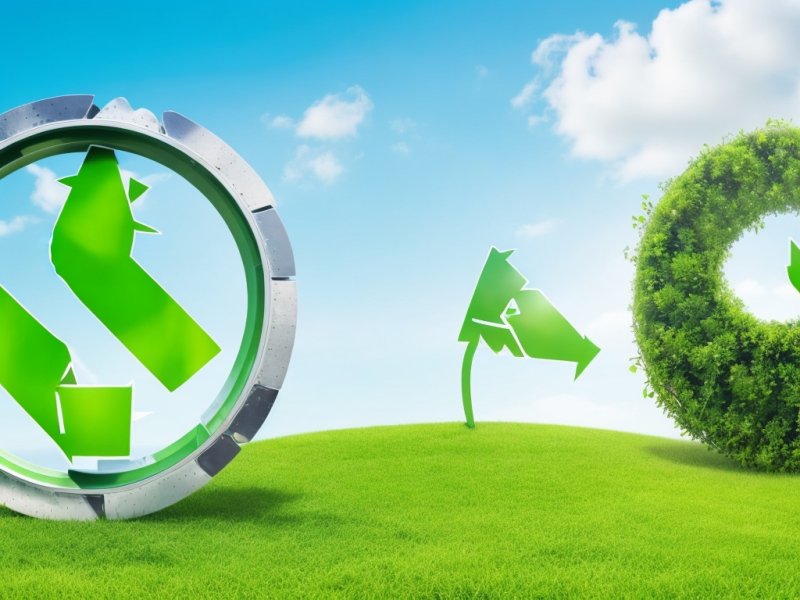
The Circular Economy and Green Technology: Reducing Waste and Promoting Recycling
Introduction:
In today's world, there is an increasing awareness of the environmental challenges we face, such as waste generation and resource depletion. To combat these issues, the concept of the circular economy has gained significant traction. The circular economy aims to minimize waste and maximize resource efficiency by creating a closed-loop system where products are designed for reuse, recycling, and regeneration. Green technology plays a pivotal role in enabling this transition towards a sustainable and circular economy. In this blog post, we will explore the key principles of the circular economy, delve into the importance of green technology, and discuss how they work together to reduce waste and promote recycling.
1. Understanding the Circular Economy:
The linear economy, which follows a "take-make-dispose" model, is no longer viable in the face of growing resource scarcity and environmental degradation. The circular economy, on the other hand, proposes a regenerative approach that keeps materials and products in use for as long as possible. It is based on three core principles:
- Designing out waste and pollution: The circular economy emphasizes the importance of designing products with the intent of minimizing waste and pollution. This involves choosing materials that are recyclable, reducing the use of harmful substances, and designing for durability and disassembly.
- Keeping products and materials in use: Instead of discarding products after use, the circular economy encourages their reuse and refurbishment. This can be achieved through practices such as repair, remanufacturing, and sharing platforms, extending the lifespan of products.
- Regenerating natural systems: The circular economy aims to restore and regenerate ecosystems by using renewable resources and ensuring the safe disposal or regeneration of waste materials. It focuses on closing the loop by recycling materials to create new products, reducing the extraction of virgin resources.
2. The Role of Green Technology:
Green technology, also known as clean technology or eco-friendly technology, plays a crucial role in facilitating the transition to a circular economy. It encompasses various innovative solutions and processes that aim to reduce environmental impact and promote sustainability. Here are some key areas where green technology contributes to waste reduction and recycling:
- Recycling and Waste Management: Advanced recycling technologies enable the efficient separation and processing of different materials, making recycling more feasible and cost-effective. Techniques such as mechanical recycling, chemical recycling, and biodegradation help convert waste into valuable resources.
- Renewable Energy: The adoption of renewable energy sources, such as solar and wind power, reduces reliance on fossil fuels and mitigates greenhouse gas emissions. This shift to cleaner energy not only contributes to waste reduction but also promotes a sustainable energy system.
- Sustainable Materials and Manufacturing: Green technology promotes the use of sustainable materials in manufacturing processes. This includes the development of bio-based materials, lightweight and durable alternatives, and 3D printing technologies that minimize material waste.
- Internet of Things (IoT) and Data Analytics: The integration of IoT devices and data analytics enables more efficient resource management. Smart grids, sensors, and monitoring systems help optimize energy consumption, waste management, and supply chains, reducing waste and improving resource allocation.
3. Benefits and Challenges:
Implementing a circular economy supported by green technology offers numerous benefits, including:
- Resource Conservation: By maximizing the use of existing resources and reducing the extraction of virgin materials, the circular economy helps preserve natural resources and protect ecosystems.
- Waste Reduction: By promoting recycling, reusing, and remanufacturing, the circular economy minimizes waste generation, reducing the burden on landfills and incineration.
- Economic Opportunities: The circular economy can create new business models, job opportunities, and markets based on sustainable practices. It fosters innovation and drives economic growth while addressing environmental challenges.
However, there are challenges that need to be overcome, such as:
- Technological Limitations: Some green technologies may still be in the early stages of development or have limited scalability. Further research and investment are required to improve their efficiency and affordability.
- Regulatory Frameworks: Governments need to develop supportive policies and regulations to incentivize the adoption of green technologies and circular economy practices. This includes providing financial incentives, implementing extended producer responsibility, and promoting eco-design principles.
Conclusion:
The circular economy, driven by the integration of green technology, holds immense potential for reducing waste and promoting recycling. By embracing the principles of designing out waste and pollution, keeping products and materials in use, and regenerating natural systems, we can transition towards a more sustainable future. Green technology provides the necessary tools and innovations to enable this transition, from advanced recycling techniques to renewable energy solutions. By collectively embracing the circular economy and green technology, we can make significant progress in addressing the environmental challenges we face and pave the way for a more sustainable and prosperous world.

Share This News